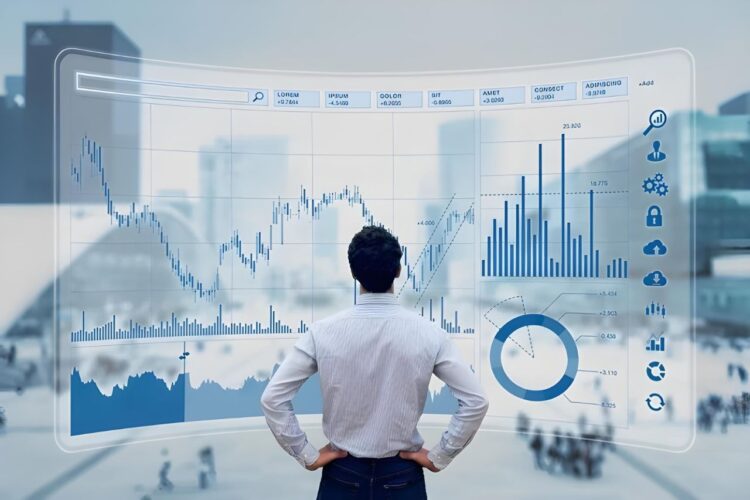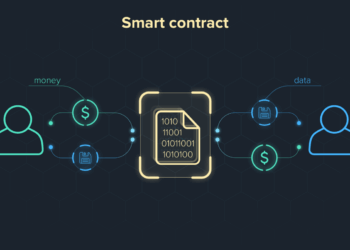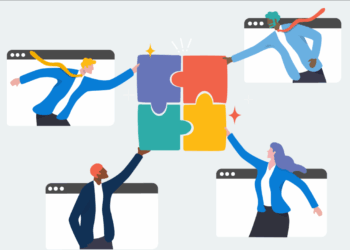Essential Investing Tools for Maximum Profit
In the relentless world of financial markets, success isn’t just about intuition or luck; it’s fundamentally about information, efficiency, and execution. For both seasoned veterans and aspiring traders, the difference between marginal returns and substantial wealth often boils down to the quality of the tools they employ. The digital age has democratized investing, but it has also created an overwhelming deluge of data. Navigating this landscape effectively requires a sophisticated, customized arsenal of investing tools. This comprehensive guide explores the essential software, platforms, and analytical instruments that every serious trader and investor must integrate into their daily routine to achieve maximum profit and minimize risk. By leveraging these cutting-edge resources, you can transform complex market analysis into actionable, high-probability trades, effectively turning your brokerage account into a powerful financial engine.
The Foundation: Brokerage and Trading Platforms
The single most crucial tool is the platform through which you execute trades. This is your operational command center, and its reliability, speed, and feature set are non-negotiable for serious market participation. Modern platforms go far beyond simple order entry; they are integrated ecosystems for research, analysis, and strategy deployment.
Selecting the Optimal Trading Platform
Choosing the right platform is dependent on your trading style, asset class focus (stocks, options, futures, crypto), and need for advanced features.
A. Robust Features for Active Traders High-frequency and day traders require platforms offering the fastest execution speeds, low latency data feeds, and advanced order types.
- Direct Market Access (DMA): Allows trades to be routed directly to exchanges, bypassing traditional order flow processes, often resulting in better price fills.
- Level II Data and Time & Sales: Provides transparency into the order book (bid/ask depth), crucial for understanding market liquidity and short-term price pressure.
- Advanced Charting Packages: Includes highly customizable charts with hundreds of technical indicators, drawing tools, and multi-monitor support.
- Paper Trading/Simulators: Essential environments for testing new strategies and tactics with zero financial risk before deploying capital.
B. Essential Tools for Long-Term Investors For those employing a buy-and-hold strategy, the platform must prioritize cost efficiency, reliable research, and tax management.
- Low-Cost or Commission-Free Trading: Minimizes frictional costs that erode long-term returns, particularly for frequent deposits or rebalancing.
- Automatic Dividend Reinvestment Plans (DRIPs): Facilitates the compounding effect by automatically purchasing additional shares with dividend payouts.
- Tax-Loss Harvesting Tools: Automated features that help identify and sell losing positions to offset capital gains, optimizing annual tax liability.
- Fractional Share Investing: Allows investors to deploy small amounts of capital into high-priced stocks, promoting diversified portfolio construction regardless of budget size.
C. Integration with Third-Party Software (APIs) The ideal platform offers open Application Programming Interfaces (APIs). This allows traders to connect external, specialized tools—such as custom algorithms, proprietary analytical software, or dedicated portfolio tracking apps—directly to their live trading account, creating a seamless and powerful analytical workflow.
Analytical Powerhouses: Screening and Data Tools
Successful investing begins with finding the right opportunities. Screening tools help filter the global market to pinpoint investments that meet specific, data-driven criteria. Data visualization and technical analysis tools then help confirm the timing and validity of the trade.
A. Fundamental Screening Tools
These tools sift through thousands of stocks based on a company’s financial health, management, and intrinsic value.
A. Financial Ratio Filters: Filters based on Price-to-Earnings (P/E), Debt-to-Equity (D/E), Return on Equity (ROE), and Piotroski F-Score to identify value or growth characteristics.
B. Growth Metric Filters: Allows filtering based on historical and projected revenue, earnings per share (EPS) growth, or Free Cash Flow (FCF) generation.
C. Sector and Industry Analysis: Provides granular control to screen within specific economic sectors, helping investors manage cyclical risk or focus on high-growth areas like technology or healthcare.
D. Insider and Institutional Activity Tracking: Alerts users to significant stock purchases or sales by company executives (insiders) or large investment firms, which often signals confidence or concern about future performance.
B. Advanced Technical Analysis Software
Technical analysis tools are the visualizers of market psychology, using price and volume history to forecast future movements.
A. Customizable Charting Systems: Must support multiple chart types (e.g., Candlestick, Heikin-Ashi, Renko) and allow for overlaying proprietary indicators developed by the trader.
B. Backtesting Engines: Crucial tools that allow traders to test a trading strategy against decades of historical market data to assess its potential profitability and risk metrics (e.g., maximum drawdown) before risking real capital.
C. Real-Time Pattern Recognition: Software that automatically identifies classic chart patterns (e.g., Head and Shoulders, Double Top/Bottom, Triangles) and common candlestick formations, alerting the trader to potential reversal or continuation points.
D. Volume Profile Tools: Analytical overlays that show the distribution of trading volume at different price levels, identifying high-liquidity zones (Volume at Price) that act as support and resistance.
C. Economic and Sentiment Indicators
The price of any asset is influenced by macroeconomic trends and collective investor mood. Ignoring these external factors is a recipe for blind trading.
A. Real-Time Economic Calendars: Alerts traders to upcoming high-impact events like Federal Reserve meetings, Non-Farm Payroll reports, and inflation data, which can trigger significant market volatility.
B. Sentiment Meters (Fear & Greed Index): Tools that aggregate various indicators (e.g., put/call ratios, volatility measures) to gauge whether the market is dominated by irrational fear (buying opportunity) or excessive greed (potential top).
C. News Aggregators with Latency Filters: Specialized news feeds that categorize and filter financial news by speed and impact, ensuring the trader is among the first to react to market-moving corporate announcements.

Risk Management and Portfolio Optimization Tools
Trading without rigorous risk management is speculation, not investing. The most sophisticated tools are designed not just to maximize profits, but critically, to protect capital and ensure long-term portfolio sustainability.
A. Pre-Trade Risk Calculators
Before any trade is executed, a disciplined trader quantifies the potential loss. This process is fully automated by modern tools.
A. Position Sizing Calculators: Automatically determine the correct number of shares to buy or sell based on the trader’s predetermined risk percentage per trade and the distance to their chosen stop-loss level, ensuring consistent risk exposure.
B. Expected Value (EV) Analysis: Tools that calculate the statistical edge of a trading strategy by factoring in the average win size, average loss size, and win rate, helping traders focus only on trades with a positive mathematical expectation.
C. Max Drawdown Projections: Sophisticated software that forecasts the worst-case scenario loss based on historical volatility and portfolio composition, allowing the trader to set comfortable risk tolerance limits.
B. Automated Order Management
Stop-loss and take-profit orders are the bedrock of capital preservation and profit realization. Automated tools ensure these are implemented without emotional interference.
A. Bracket Orders: Automatically places a stop-loss and a take-profit limit order simultaneously with the initial entry order. This ensures that the position is managed even if the trader is away from their screen.
B. Trailing Stops: Dynamic stop-loss orders that automatically adjust (trail) the market price as the stock moves favorably, locking in profits while still protecting against a reversal.
C. Conditional Orders (If/Then Logic): Allows for complex order structures where one action is executed only if a previous condition (e.g., reaching a support level, crossing a moving average) is met.
C. Comprehensive Portfolio Tracking and Analytics
A deep understanding of portfolio performance, correlation, and diversification is essential for managing systemic risk.
A. Performance Attribution: Pinpoints precisely which assets, sectors, or strategies contributed most significantly to the portfolio’s gains or losses over a given period, allowing for targeted adjustment.
B. Correlation Matrix: Calculates the statistical relationship between different assets in the portfolio. A truly diversified portfolio should hold assets with low or negative correlation (e.g., gold and stocks) to mitigate losses during broad market downturns.
C. Monte Carlo Simulation: Advanced software that runs thousands of randomized simulations based on historical returns to project the probability distribution of future portfolio values, providing a more realistic assessment of retirement or wealth goals.
The Edge: Alternative Data and AI-Driven Tools
The greatest competitive edge today comes from accessing and interpreting data before the rest of the market. This often means moving beyond traditional financial statements and price charts into the realm of Alternative Data and Artificial Intelligence (AI).
A. Leveraging Alternative Data Sources
Alternative data refers to non-traditional datasets used to gain investment insight, often sourced outside of public company filings.
A. Satellite Imagery Analysis: Used to count cars in retail parking lots or track mining operations to forecast quarterly sales or production figures before they are officially reported.
B. Web Scraping and Consumer Behavior: Monitoring web traffic, app downloads, and social media mentions (sentiment analysis) to predict product popularity and customer engagement trends.
C. Credit Card Transaction Data: Aggregated and anonymized data used to accurately estimate sales performance for major retailers or restaurants weeks before official earnings releases.
D. Job Posting and Employee Churn Data: Tracking the number of job openings and employee sentiment (e.g., via specialized employee review websites) to gauge a company’s health, expansion, or internal instability.
B. AI and Algorithmic Trading Software
AI tools process massive datasets faster than any human, identifying subtle, non-linear relationships that drive market behavior.
A. Machine Learning for Predictive Modeling: Algorithms trained on historical data to identify complex patterns and forecast short-term price movements with a high degree of statistical confidence.
B. Natural Language Processing (NLP): Used to rapidly scan, classify, and analyze thousands of news articles, regulatory filings, and earnings call transcripts to extract immediate insights and sentiment, flagging non-obvious risks or opportunities.
C. Automated Strategy Execution: The ultimate application where the AI not only identifies the trade but also executes the orders instantly, capitalizing on fleeting market inefficiencies that human traders cannot exploit due to reaction time limitations.
Education and Community: The Human Element Tools
No tool, no matter how sophisticated, can replace continuous learning and shared experience. These “soft” tools are essential for trader development and emotional discipline.
A. Essential Educational Resources
A. Specialized Financial News and Analysis Platforms: Providers offering in-depth investigative reports, expert interviews, and macroeconomic commentary that provide crucial context for market movements.
B. Technical and Fundamental Training Modules: Structured, high-quality video courses and literature focused on developing a deep understanding of core principles like candlestick patterns, portfolio theory, and valuation methods.
C. Webinar and Mentorship Access: Live sessions with successful traders or market analysts to review current market conditions, test strategies, and discuss psychological discipline.
B. Community and Networking Tools
A. Verified Trading Communities (Forums and Chat Rooms): Platforms where experienced traders share ideas, validate analyses, and provide real-time feedback on market developments, though caution and verification are always required.
B. Social Trading Networks: Platforms that allow traders to view, replicate, or “follow” the trades of top-performing peers, serving as a form of guided portfolio management and learning.

Integration: Building the Ultimate Trading Workflow
The difference between a collection of tools and a powerful system is integration. The best traders link their tools together in a cohesive workflow that minimizes friction and maximizes reaction speed.
A. Data Aggregation: Connecting the brokerage account, screening tool, and news feed into a single dashboard or customized interface.
B. Automated Alerting: Setting up alerts based on technical criteria (e.g., price crosses a 200-day moving average), fundamental releases (e.g., earnings date approaches), or sentiment shifts, delivered directly to the trader’s preferred device.
C. Journaling and Review Software: Dedicated tools for meticulously logging every trade, including the rationale, emotional state, and outcome. These journals are then analyzed to identify and eliminate costly behavioral biases and psychological errors.
D. Cloud-Based Synchronization: Ensuring that all analysis, charts, watchlists, and strategy parameters are instantly synchronized across desktop, tablet, and mobile devices, allowing for seamless trading management from any location.
Conclusion: The Mandate for Technological Adoption
The modern financial market is a proving ground for technological superiority. Relying solely on a basic brokerage account and free charting software is a strategy doomed to mediocrity. For any individual seeking to build genuine, sustainable wealth through trading and investing, the adoption of a robust, integrated suite of essential investing tools is not merely an advantage—it is a mandatory prerequisite. By meticulously selecting the right brokerage platform, harnessing the power of AI-driven analytics and alternative data, and rigorously enforcing risk management protocols through automated safeguards, you equip yourself to outperform the market and confidently navigate the complexities of global finance, securing your financial future. The investment in these tools is perhaps the highest-return investment a serious trader can make.












